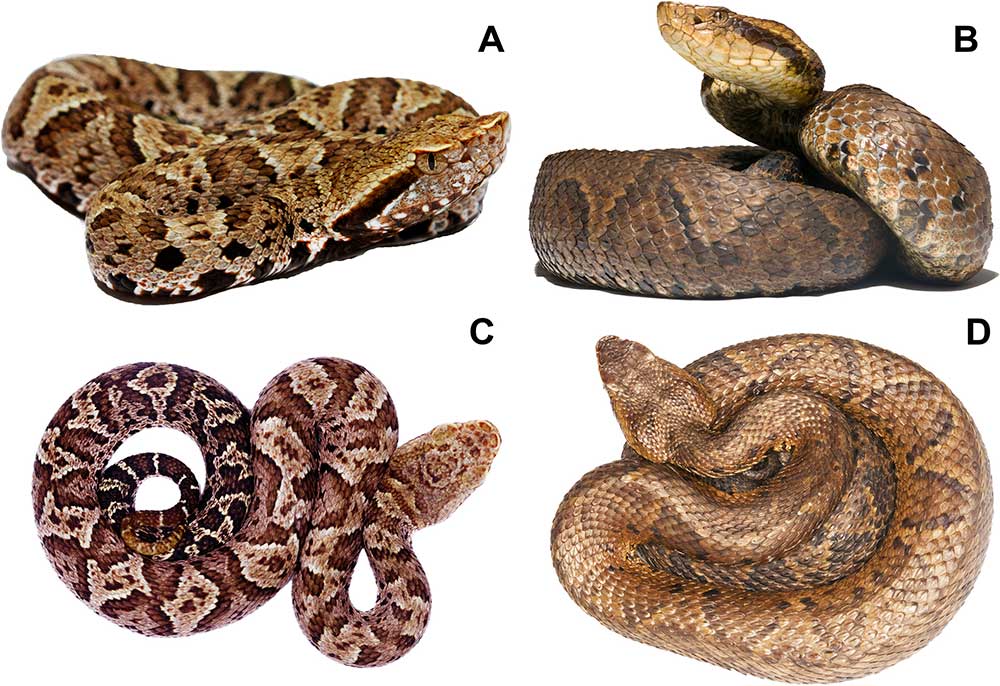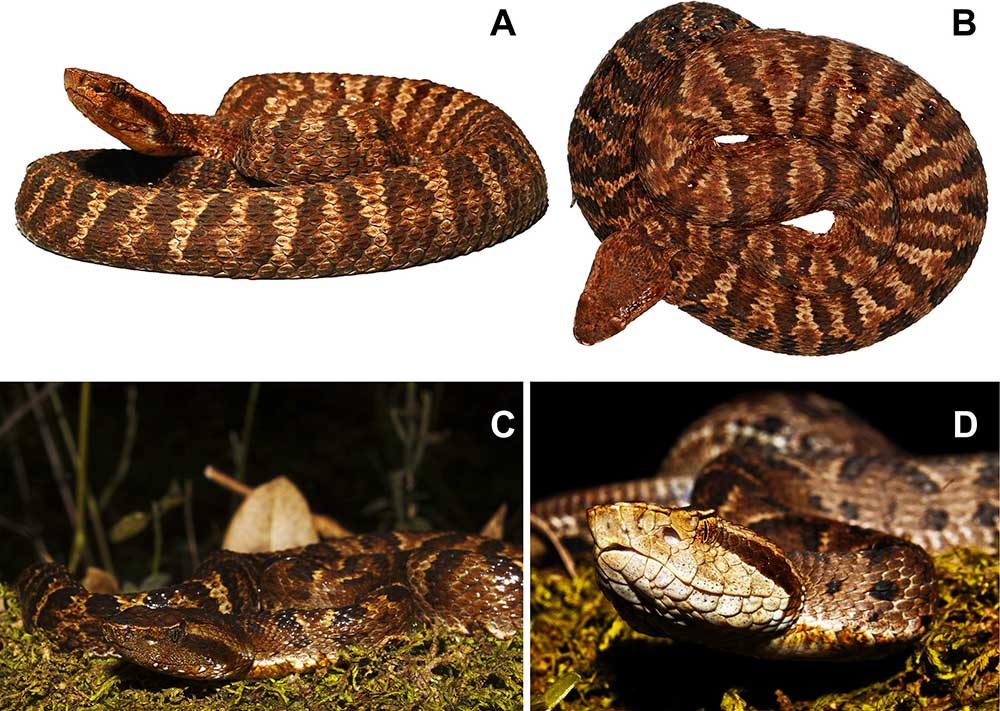The venomous snakes reside in areas of the Andes that are difficult to reach, including the Choco Rainforest in Ecuador, the western lowland Amazon rainforest, the Pacific highlands and the eastern slopes of the Amazon.
Researchers with the Instituto Nacional de Salud, Bogotá, Colombia, Instituto Butantan, São Paulo, Brazil, and the Museum of Zoology, Senckenberg Natural History Collections have discovered and described a new species of venomous pit viper snake in the eastern Andes mountains.
The reptiles reside in areas of the Andes that are difficult to reach, including the Choco Rainforest in Ecuador, the western lowland Amazon rainforest, the Pacific highlands and the eastern slopes of the Amazon.

Color in life of Bothrocophias tulitoi sp. nov. A, C Lateral and dorsal view of a male neonate (paratype INSZ 0128). B, D Lateral and dorsal view of an adult female (paratype INSZ 0144). All specimens from vereda Cienaga La Valvanera, municipality of Garagoa, department of Boyacá, Colombia.
The venomous toad-headed pit vipers are Bothrocophias tulitoi sp. nov. and Bothrocophias myrringae sp. nov and were named in honor of educators Tulio Angarita and Myriam Sierra, who developed an educational model that is used in all schools in Colombia. Both B. myrringae and B. tulitoi were often mistaken for Bothrocophias microphthalmus. The two new species though are very different, including the arrangement and number of scales as well as the color pattern on the body and tail. The researchers performed phylogenetic and morphological analyses to determine the snakes were indeed different from Bothrocophias microphthalmus.
Bothrocophias tulitoi is brown in coloration with bright reddish or orange reddish speckles with black spots. he male holotype has a snout to vent length of 377.4. Bothrocophias myrringae has a creamy yellow ventral surface and mottled and dark brown ventral scales that turn creamy white toward the edges of the paraventral scales. The tail area is a speckled bright reddish or orangein coloration with irregular black spots. The male holotype has a snout to vent length of 491.7mm.
Palm Pit Vipers Of The Genus Bothriechis
“Clarifying the taxonomy of toadheaded pitvipers has significant implications for the treatment of venomous snake bites in Andean countries. Unfortunately, such accidents are sometimes fatal. The first step in effectively treating snakebites is to accurately identify the snake that caused the poisoning. This facilitates the subsequent preparation and administration of the proper antiserum, i.e. the antivenom” Prof. Dr. Uwe Fritz of Senckenberg Natural History Collections said in a statement released to the media.
“Knowing the biology and habitat of a particular species also reduces the risk of being bitten in the first place. The new taxonomic findings of the study thus make an important contribution toward achieving the World Health Organization’s goal of reducing the number of snakebites.”
The complete paper, Hidden in the highs: Two new species of the enigmatic toadheaded pitvipers of the genus Bothrocophias,” can be read on the Vertebrate Zoology website.



